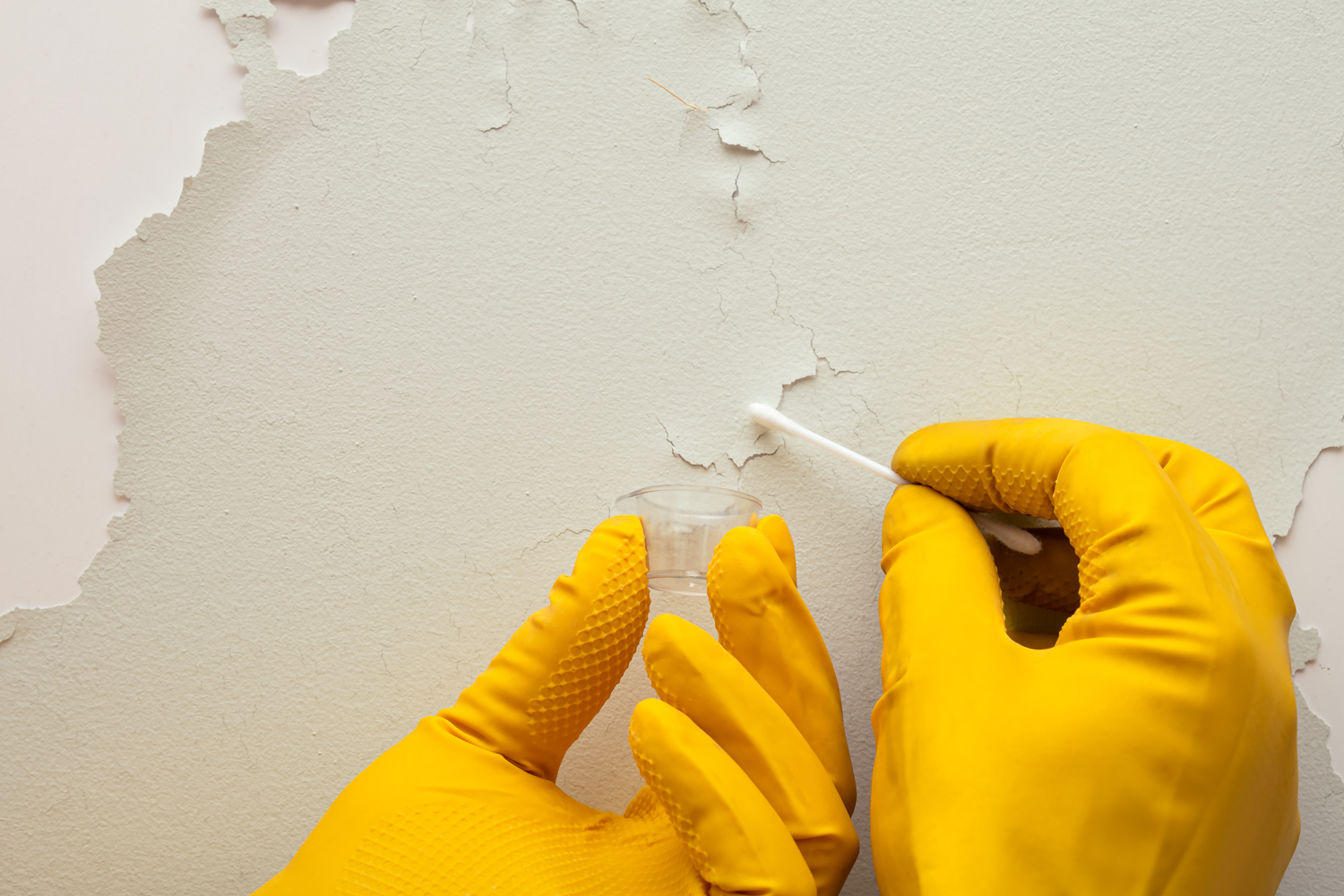Where to Check for Mold Before You Buy Your Next Home
When you begin your search for your next home, even if it is a new build, it is important to inspect for mold before you sign that contract to buy. The last thing you need to do is inherit someone else’s mold problem. Just looking inside cabinets and vanities, or in dark corners of the basement and not seeing any mold is no guarantee that mold is not present. Mold could be lurking inside wall cavities, under flooring or behind bathroom wallpaper. Unless you do a thorough mold inspection BEFORE you buy, you really won’t know for sure.
Why Should You Have an Inspection for Mold?
Mold is a fungus that can cause many adverse health affects. Common, yet mild exposure reactions can be something as simple as a stuffy nose or a sore throat and headache. People that happen to be allergic to mold may develop more serious reactions including mold-induced asthma and/or severe inflammation of lung tissue. Mold is everywhere and may not be a problem until the mold spores land on an organic material of the home that contains excess moisture. At that point a mold colony may begin to develop and spread. Organic materials include paper, cardboard, ceiling tiles, natural fibers like wool or cotton, drywall, and wood. This is not a complete list, just a few examples.
At-Risk Categories of People
Common categories of people that are recognized as “at risk” to mold exposure include seniors (senior citizens that is, not high school students) whose immune systems are not as strong as they used to be, young children whose immune systems aren’t fully developed yet, pregnant women, and individuals who have a weakened immune system, like cancer patients. People with diseases like Lupus or Crohn’s disease are often prescribed immunosuppressant medications designed to suppress their immune system. This causes them to possibly be more susceptible to mold exposure issues.
Important Areas to Inspect for Mold
There are certain areas of a home that are more at risk for containing mold. When touring a potential home that you may be interested in purchasing, here are some of the more common areas to check out. Make sure you take a flashlight with you so that you will be able to peek into those dark corners and tucked away spaces, like closets and beneath open stairwells.
Exterior Spaces
- Before you even enter the house, walk around the outside. Look at the roof for any missing or curled up shingles. Ask when was the last time the roof was replaced. Inspect the grading around the home’s foundation. Does the ground gently slope away?
- Are the gutters firmly attached and are the downspouts directed away from the foundation?
- Look for any foundation cracks. Is there any siding or trim missing anywhere?
The Home’s Interior Walls and Ceilings
- When you first enter the home, do you notice any musty odors? Sometimes it is much easier to detect a mold problem by smell than by sight. An earthy, stale odor can be an indicator of a mold problem hiding somewhere.
- Look for stains or other discolorations on ceilings and walls, especially on the exterior walls. Also look for discolorations around window and door trim.
- Be aware of any uneven texturing that may indicate past mold problems.
Bathrooms
Bathrooms should be inspected in closer detail:
- Inspect under the vanities, looking for visible mold. Also pay close attention to the vanity floors, looking for any discoloration caused by leaky faucets, drain lines or water supply lines.
- Check for water staining on the caulking around bathtubs, shower enclosures, and toilets.
- Turn on the bathroom exhaust fans to make sure they operate properly. Ceiling stains around the exhaust fans are a good indication of a water intrusion caused by leaky roof vent pipes.
Kitchens
Repeat the detailed inspection you did in the bathrooms in the kitchen:
- Inspect under the sink and closely check the sink cabinet’s floor for visible mold or water stains.
- Pay close attention to the floor near the dishwasher and refrigerator. Look for any kind of staining or warping of the flooring. If there is a separate beverage cooler or wet bar, check the flooring near them also.
- Cooking creates a lot of excess humidity, so it is important that the kitchen exhaust fan is properly located above the cooking area and that it functions properly.
Attic Areas
- Roof leaks do not always cause damage to the ceilings or rooms below, so it is important to look for mold or staining on the plywood roof sheathing, the rafters, or the roof trusses.
- No exhaust fan should be vented from inside the living areas of the house into the attic. They should all be ducted outside the attic.
Basements
- Inspect the main level’s floor joists from below, especially around any plumbing that comes through the floor. Copper water lines should be free of any condensation or any mineral buildup around pipe joints.
- Inspect the furnace ducting; there should be no signs of rusty areas and there should be no condensation visible on them.
- Look for foundation cracks or any larger than normal cracks (not counting hairline cracks) on the concrete floor.
- In finished areas, look for signs of mold on baseboards or in closets. Look for any discoloration on drywall around windows.
HVAC Systems
- Open the access panel on the furnace; you’re looking for any rusty components inside the unit.
- If there is excess moisture inside the furnace, it stands to reason that there may also be excess moisture in the furnace ducts throughout the home.
- Look at the metal register and cold air return covers in every room for signs of visible mold or rust.
Conclusion
As a smart homebuyer, you should approach any potential home purchase by doing a mold inspection. This inspection should not replace a qualified home inspector, but it will give you a better overall idea of the condition of the home you are thinking of purchasing and also help you to determine if the home is worth further consideration.
If you are looking at a home and you see large amounts of visible mold, unless it is a spectacular deal, walk away. There are other homes for sale and you really don’t need someone else’s mold problems. However it is important to also remember that no home is ever perfect in all regards. Minor issues can be safely and effectively dealt with by contacting a qualified mold remediation specialist, like Water Mold Fire Restoration. Contact us at 800-905-0277 or at help@watermoldfire.net. Doing so BEFORE you buy or make an offer on a house could just possibly save you a lot money.








